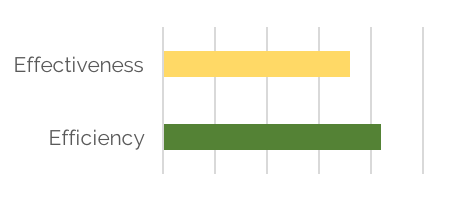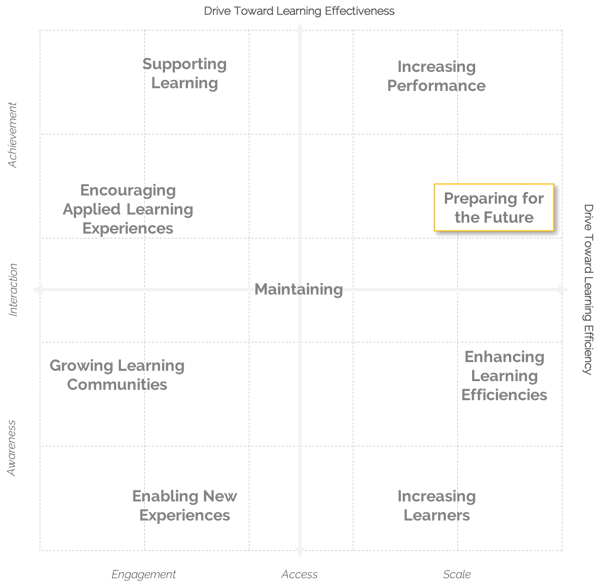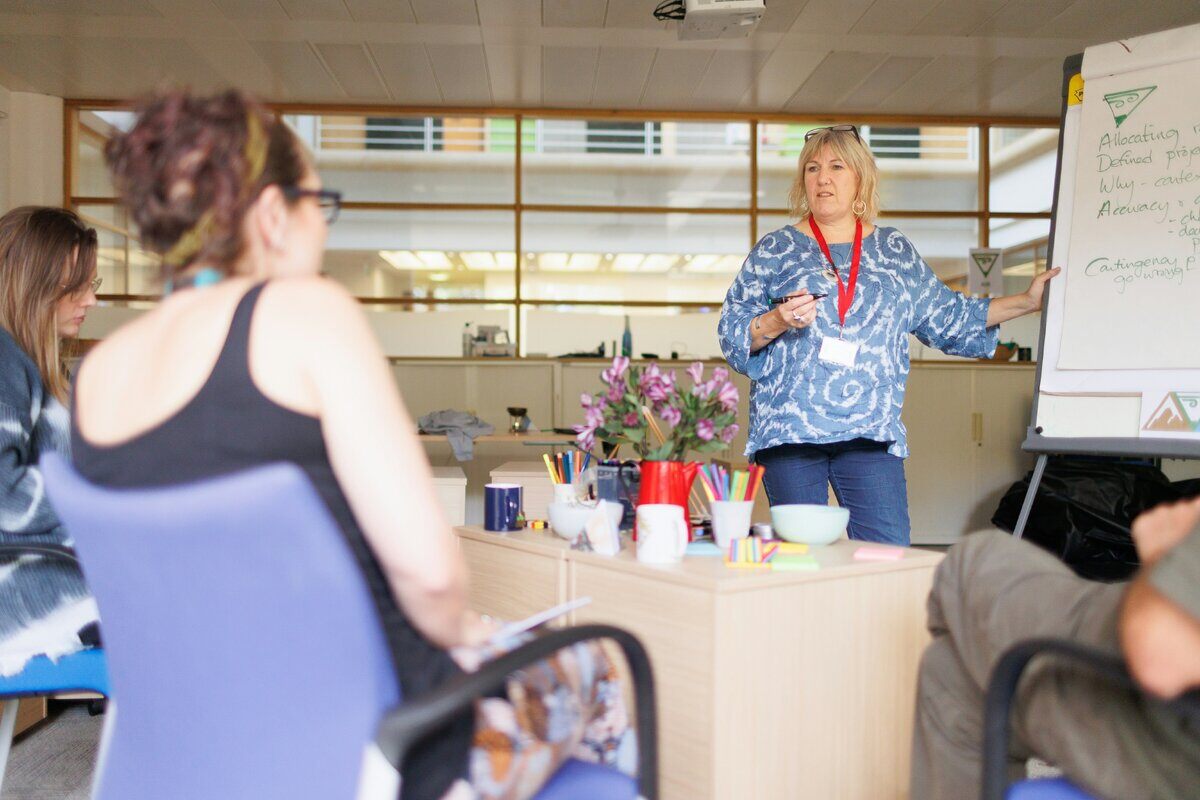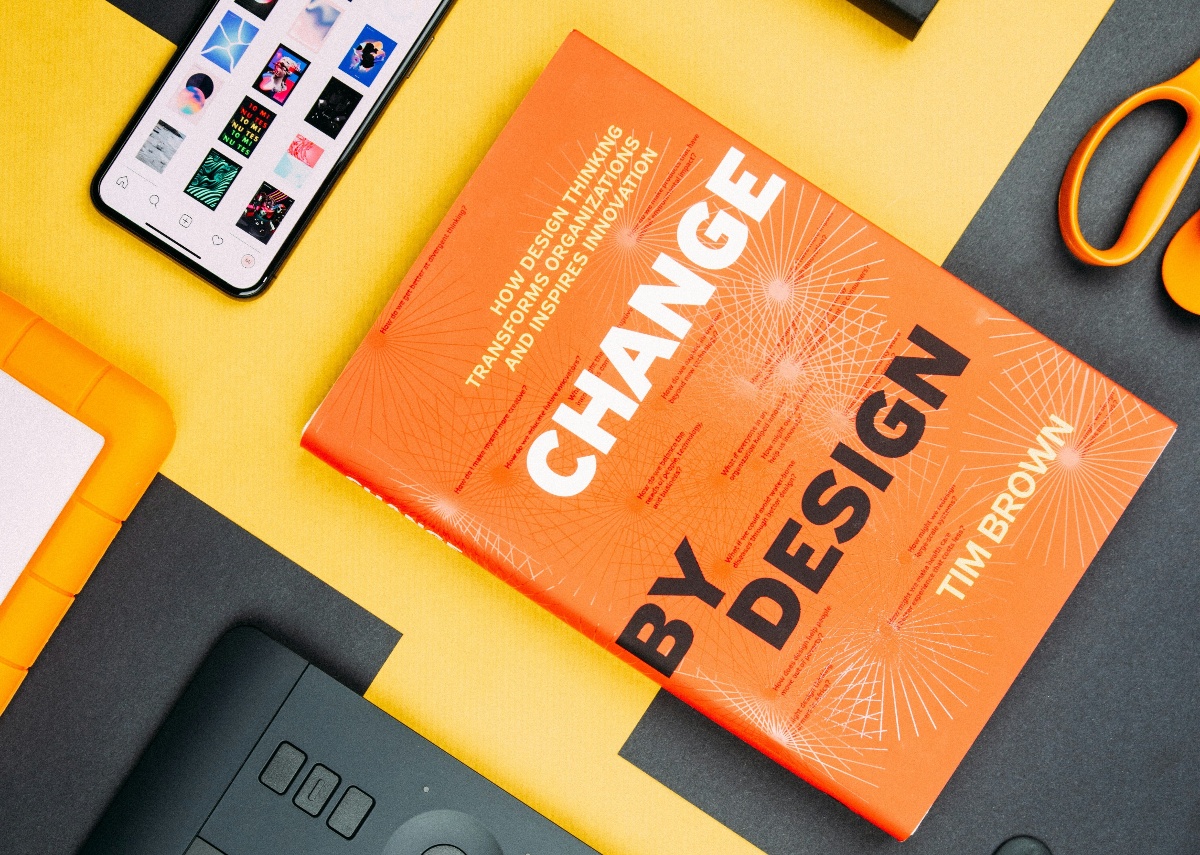
Unlocking the Secrets of Learning Innovation
The Institute for Learning Environment Design recently attended the Online Learning Consortium (OLC) Innovate conference in Nashville Tennessee. In addition to catching up with many of our collaborators from other institutions, we also unveiled a new visual analytics tool for accelerating learning innovation called the Learning Environment Innovation Inventory (LEI2). We had the privilege of sharing this tool at a collaborative workshop.
This tool is comprised of an online assessment that is used to generate a visual analytics report. This report, called the “Landscape”, visualizes key factors that influence learning innovation with teams and organizations. The landscape report organizes these factors in the team’s innovation mindset, values of learning environment elements, and capacity across the innovation cycle.
The LEI2 offers educational institutions, businesses, and associations a simple and powerful way to grow their capacity for new learning approaches.
During our workshop at OLC, we discussed a wide array of learning innovations from video conferencing, technology selection, program development, and course design.
The success of each of these approaches is dependent on the capacity to create new value through innovation processes.
Innovation is a Balancing Act
One topic we discussed during the OLC workshop was drivers of learning innovation.
People and organizations are driven to innovation by efficiency and effectiveness. However, the degree to which each of these drivers influence change and value creation are often different.
In one case, an organization may be driven by efficiency to increase enrollment or reduce the time to a credential.
In another case, an organization may be more driven by effectiveness and thus achieving a certain performance outcome. The balance and make-up of these drivers can determine the dynamics of innovation activities.
The results of the LEI2 from the OLC workshop participants indicated a slight preference towards a drive toward learning efficiency. This suggests if the group of workshop attendees were collaborating on a project, they would be more likely to preference innovations that advance learning efficiency over effectiveness.

The following diagram indicates the combination of drivers of learning effectiveness and learning efficiency are aligned most with a “preparing for the future” theme. This priority index is another way of examining how drivers of learning innovation ultimately frame the way teams and organizations prioritize change.

These results suggest a team that is future-minded and emphasizes the value of preparation and capacity growth.
Managing Innovation Priorities
Learning innovation presents a rather large challenge when it comes to execution of new ideas and plans. Until now, the variables that relate most to how teams and organizations advance new approaches to learning has been invisible. The LEI2 unlocks these secrets into how new approaches to learning are generated, tested, and scaled.
Summary
We valued the opportunity to share the LEI2 with the OLC community and look forward to seeing how these visual insights will enhance the way teams and organizations support new learning opportunities.
Subscribe To Our Blog
Most Popular
Post By Topic
- associations (2)
- blended learning (2)
- CLEA (3)
- community of practice (1)
- Continuous Improvement (1)
- covid (1)
- culture (1)
- customer engagement (1)
- Design Studio Session (7)
- designcast (2)
- E-Learning (2)
- engagement (1)
- equity (1)
- ILED (6)
- ILED Designcasts (4)
- Innovation (4)
- learning design (25)
- learning enviroments (21)
- learning innovation, (4)
- Learning Strategy (7)
- LEM Techniques (3)
- micro-credential (17)
- Powered by LEM (5)
- professional learner (2)
- Show Notes (4)
- Skills Gap (2)
- technology (3)
- Uncategorized (11)
- video (1)
- visualization (10)
- Workshops (1)





